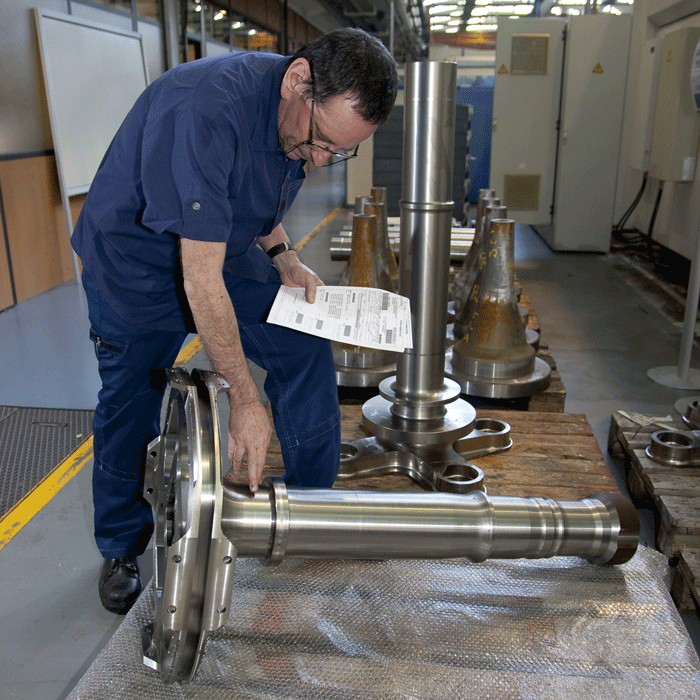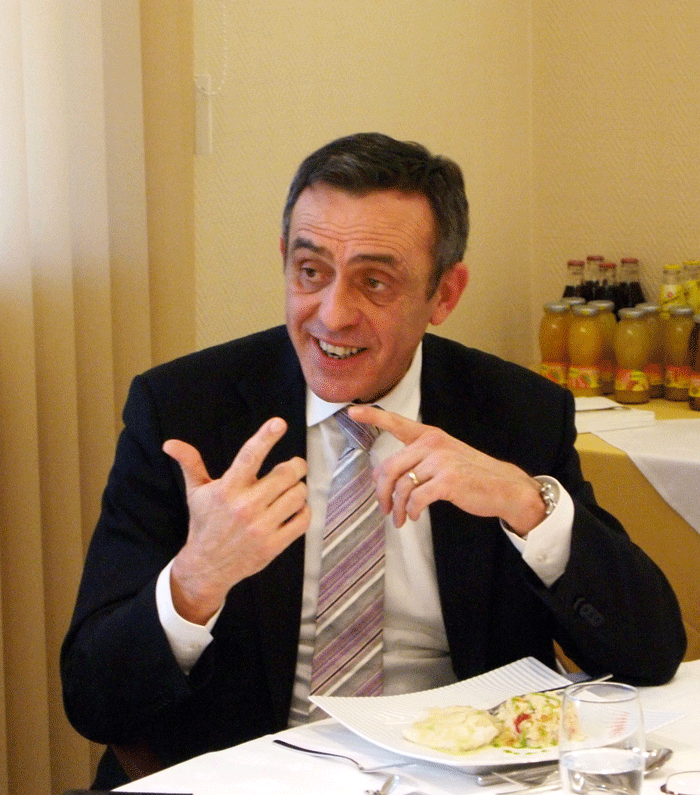Manufacturing for Sustainability: The Eurocopter Approach
04/09/2011- During the SLD visit to the Eurocopter manufacturing facility in February 2011, SLD sat down with Alain Rolland, Senior Vice President, Center of Excellence Dynamics. Rolland has had wide-ranging experience within Eurocopter, including Super Puma program director, director for all Eurocopter commercial programs, and Director of the NH90 program. With such a wide-ranging background, SLD could have discussed a broad spectrum of issues with Rolland. But we focused in our discussions on one of Eurcopter’s core competencies, which is a favorite theme of ours, manufacturing for sustainability. A core impact of building new systems and then deploying them is that manufacturers are able to craft new capabilities into the new systems which can lead to significant improvements in reliability, maintainability and hence operational performance gains. Eurocopter as the leading commercial manufacturer of helicopters world wide pays special attention to the effort to improve manufacturing over time to get such performance gains.
Photo Credit SLD, 2011
Rolland During the February 2011 SLD Interview
SLD: How do you approach shaping the manufacturing for sustainability challenge?
Rolland: The key is to reduce the number of parts necessary to operate the aircraft; less parts, more reliability, less maintenance. Getting the dynamic systems and components simplified is a key part of the process.
Reducing the number of parts is beneficial in many respects, notably safety as well. If you reduce the number of moving helicopter parts, you reduce the risk of failure and enhance safety and reliability.
SLD: What has driven the effort to enhance maintainability?
Rolland: Let me approach the question from the standpoint of the Super Puma. The Puma class helicopters were very useful to the oil and gas business for a certain number of years. Intense helicopter activity in term of oil and gas, really started at the end of the 70s, beginning of the 80s.And at the time, basically we were the only helo provider, especially with the Super Puma to really do this kind of business. There was no real competitor. As a matter of fact, Super Puma was there at the right time, with the right specification. We could have simply sought to exploit our advantage; but we focused on continuous improvement, in large part because of the evolving business model.The oil and gas people are very demanding: they want high reliability and safety. They drove us to optimize maintenance.
And that became translated into power by the hour contracts, a business model which naturally leverages reliability increases and maintenance cost reduction. We have to deliver a certain rate of availability at fixed price.So we gained from enhanced reliability; when we designed Super Puma Mark 2 we made sure we designed and built a more maintainable and reliable product.The shift from the earlier Puma to the Super Puma allowed us to have many parts simplifications. In the earlier Puma, you have three ball bearings and two pinions bolted together. With the Super Puma we only make one part, which either eliminates or integrates the older parts. Simplification which leads directly to enhanced reliability and safety all generated by an improved manufacturing process.

Credit: Eurocopter
Building the Super Puma
SLD: How do you measure progress?
Rolland: I think the most probably striking example is what we call the TBO, Time between overall, and its augmentation over time. Since we do not have — especially in gearboxes — condition based maintenance (CBM), we have to have TBOs, that is to say the forced period between each section of the assemblies. On the other hand, regarding the rotor systems, they are all now CBM.
SLD: And you have monitoring systems to assist in digital management of the processes as well?
Rolland: We have pioneered in digital health monitoring systems. We use Health and Usage Monitoring Systems. We do the raw vibration data reduction on the ground. You have sensors, embedded into the dynamic systems, which are downloaded on ground via laptops. And then of course, the let’s say the intelligence of the system is in the algorithm to exploit correlated with the vibration data.We have not reached maturity yet of those system as needed to achieve full CBM on transmissions systems. But the trend line is clear.


